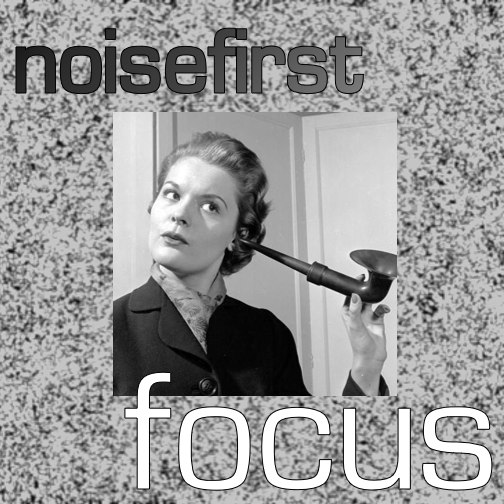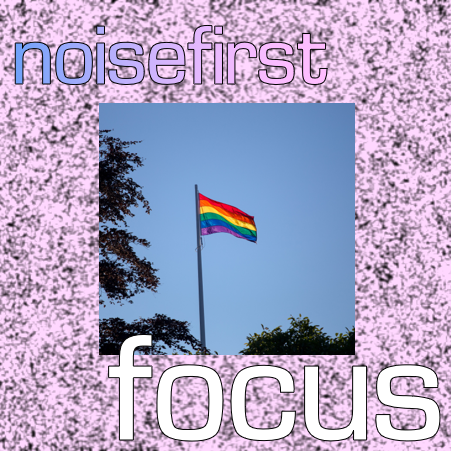Last Updated on 08/01/2023

It’s easy to think of art forms like photography as modes of recording; you take an image of something that’s there and immortalise it forever, but it’s somewhat of a passive act. You’re not involved in the means of production (only post-production, if you will).
But the role photography played in the emergence of early 80s and 90s hiphop culture illustrates that for some movements, the exact opposite can be true. As one of the world’s most influential cultural phenomenons was born, photography became a crucial tool in the assertion of its authenticity and legitimacy. We often take images for granted nowadays, with hundreds of visual cues of all your favourite artists and many aspects of their lives available within seconds, but the result of this immediacy is (arguably) a loss of artistry and, ironically, candour.
Hiphop was an entirely organic culture, a grass roots, multidisciplinary movement that emerged through the streets, and its key photographers reflected this authenticity, whilst legitimising and immortalising it too, allowing cult images to spread across local and international borders and to seep into all aspects of popular culture.
Pivotal hiphop photographers of the 20th century
To track the crucial role of image-making in the growth and reception of hiphop, let’s take a look at some of the most important artists capturing, and creating, its legacy.
Lisa Leone
Born in the Bronx, Lisa Leone arguably shares the home of hiphop itself.
With her boyfriend at the time a graffiti artist, her closest friend a dancer and Leone a self proclaimed B-girl, she was part of the fabric of hiphop from the beginning. As a photography major at the High School of Art and Design, all of Leone’s work in capturing the scene emerged completely organically, with her friends asking her to spontaneously shoot their work; “a lot of graffiti artists and break dancers came out of that school. It was before people outside of New York City knew what breakdancing was”, she reflects in an interview with the Miami New Times. This grass-roots approach is exactly what led to her iconic portrait of Snoop Dogg on the set of What’s My Name?, his first ever video, as she was close friends with Fat 5 Freddy who asked her to join the shoot on a whim.

The intimacy in these photographs is palpable – they might be the softest portraits of the rapper that we have. These couldn’t have been achieved by a professional brought on set to capture b roll without context; the trusting starkness of the photos is the work of friendship, of shared community. Appearing in Vibe magazine, the images were arguably crucial in asserting the accessibility and authenticity of Snoop’s persona in his early years, as he appears exposed and honest before the lens. Whilst his image would become increasingly curated (not to a fault), these first cameos presented an artist which readers and listeners could recognise and connect to.
This is what happens when you just happen to be on set for a video. Leone’s candid portraits are the work of an artist who was heavily involved in the scene and trusted by its people, and the result is an authenticity that captured the musicians in their own environment, helping to establish hiphop as a deeply organic movement that was intrinsically linked to its context, and allowing fans to access this behind the scenes content from the beginning.
The connection between spontaneity and intimacy would continue throughout Leone’s work. Through mutual connections she was shooting in the studio whilst Nas recorded his first album, the now ubiquitous Illmatic, before anyone really knew who he was or what he would become.

Compare this shot to the kind of studio documenting we get now and the contrast is startling. This pensive image couldn’t be further from the jumped-up hype man videos of rappers in studios, acutely aware of their videographers as they perform for the camera in lo-res snapchat quality. This was a beautiful result of the combination of shooting on film and (forgive me for sounding like a boomer) the pre-social media hay day, which Leone explicitly recognises: ‘You have to remember, at that time there were no phones, there was no digital, it was all film, there were no other cameras, so it was like one person with a little Leica. Now it would have been like ten people and iPhones and constant photographing, you know. It was very different back then.’ Leone acknowledges the invisibility this gave her in the studio, as ‘people were a lot less aware of image at the time, I think because there wasn’t all this social media, it was a lot more organic, because it was film, you couldn’t even see the picture. There wasn’t this immediate need to see the image.’
The result of these images is that they truly conveyed the soul of hiphop; Leone’s unnoticed presence allowed her to capture artists in their purest, most vulnerable form. Observe Nas’ pensive expression and the joy on the faces of everyone around him; the deep spirituality of the music-making feels palpable. Leone’s work established hiphop artists not just as rappers, but as poets.
Martha Cooper
We often talk about hiphop now in a way that conflates it with music, and whilst rap is obviously crucial to this movement, it began as an inherently multidisciplinary practice. Helping to consolidate the music’s location in this wider artistic context was Martha Cooper, an iconic photographer who’s still going strong with an instagram following of over 250k. Looking at Cooper’s photos feels like stepping into Spike Lee’s consciousness shooting Do The Right Thing; blurred-motion shots of b-boys, highly saturated graffiti and boomboxes flood her images.

As the first woman to land a staff photographer position at the New York Post in 1970, Cooper’s skills were well established before the emergence of hiphop, but despite this more conventional posting, her interest was always deeply rooted in subcultures.
Cooper was crucial in establishing the wider artistic context of hiphop; her iconic 1984 book Subway Art played a vital role in recognising the aesthetic value of graffiti, and since its inception, it’s never been out of print. The nature of subcultures often means that they can be inherently hard to document, and as Cooper recognises, her ‘photography was important because photos were often the only proof of illegal subway pieces.’ More than an artistic interest, her work became a political act.
David Diallo explains the inherent links between graffiti and hiphop in the early 1980s, tracking the tangible links between rap and the visual art form:
‘Dj Grandmaster Flash, for example, claims that he used to bomb trains in the early 70s, very much like KRS-ONE who, in 1992, published his paintings in mainstream magazines like Spin and Rolling Stone. French graffiti writer Darco introduces himself both as graffiti artist and break-dancer. Phase II, one of the pioneers of the New York graffiti movement, lays the stress on the importance of graffiti and of “flyer men” in the promotion work of rap musicians like Grandmaster Flash for whom he designed flyers in 1977 in a style that he had dubbed “hip hop style” at the time. Finally, Lee, the high-profile writer of the late 70s who starred in the docudrama Wildstyle insists on the absence of any separation whatsoever, at the beginning of the movement anyway, between dancers and writers and claims that many of the prominent rappers of that era were also graffiti writers.’
Cooper’s work was crucial in situating artists in this context, and emphasising these interlinking practices. This focus on other art forms feeds into the way she shot hiphop crews and dancers themselves, always surrounding them with the markers of their subculture and constantly reaffirming the bonds in the viewer’s mind. Far from an accident, this was a deeply conscious decision; speaking to the New York Times, Cooper insists that ‘I want to put things in context. That holds true of all my work. I want to show whatever it is I am photographing in a way the viewer gets a sense of where that picture was taken.’
This is evident in Cooper’s Hip Hop Files: Photographs 1979-1984, an anthology that documented the many facets of New York hiphop culture and was disseminated globally. It’s interesting to note that of the 238 pages, only 6 are dedicated to ‘DJs and MCs’, with the other, far more expansive sections focusing on B-boys, graffiti art and downtown NYC.
Crucially, Cooper was vital in recognising (and thus establishing) the role of women in hiphop’s culture. Whilst I love the movement deeply, it’s hard to deny that hiphop has historically struggled with issues of misogyny, but women still played a vital part in forming the art form. A collaboration with Nika Kramer, Cooper’s seminal book We B*Girlz began as a documentation of a B-Girl dance competition in Germany, 2004. The book depicts dancers who’d come from all over the world, from Japan to New Zealand, and helped solidify the global importance of women’s contribution to hiphop culture. This act of acknowledging is at the heart of Cooper’s work:
‘Even when my photos don’t work aesthetically, I like to think they contain subject matter of interest to future generations. For me, photography is a form of historic preservation.’
https://www.huckmag.com/art-and-culture/photography-2/martha-cooper-interview-graffiti-hip-hop-subway-art-new-york/
Sue Kwon
Arguably combining the two approaches is iconic photographer Sue Kwon; with Leone’s intimacy and Cooper’s focus on situating artists heavily in the context of wider hiphop culture, Kwon represents a hayday of rap photography.
Her 2009 book Street Level focused specifically on capturing portraits of rappers in their New York surroundings, nestled amongst doorways, parks and skyscrapers. Perhaps this is a bit on the nose, but take Kwon’s gorgeously lucent portrait of Mobb Deep, surrounded by plants and dilapidated buildings in their own microcosmic urban jungle.

Or this almost haunting image of the Beastie Boys, where their simultaneous softness and harshness matches that of their background; like the New York Skyline they appear both austere and muted, posturing and vulnerable.
As with Leone, the intimacy of Kwon’s portraits are striking. Some of her most famous images depict Biggie at the listening party of Life After Death. Compare the harshness of the two images:

The first is what we might expect to find of rappers now; affected, severe. The second, taken only seconds later, reveals the mood of the room and the relationship between Kwon and Smalls:

Working for The Source, Kwon’s images were widely disseminated and influential during the 80s and 90s, but most importantly, they also help us to restrospectively define hiphop. Take, for example, Kwon’s portrait series documenting rappers and their daughters, or candid photos of artists in their homes or behind the scenes of videos.


Exhibited across the world, these images play an important role in allowing our generation to understand the softer side of hiphop, the side that wasn’t about holding truth to power and speaking out against socioeconomic and racial discrimination, or the war on drugs, or the prison industrial complex, or the many issues that MCs took the emotional burden of contesting. Whilst this is a vital component of the genre’s DNA, these photos allow younger fans to see the other side of the artists – to see that hiphop was also sensitive, an artform about poetry and human connection. Kwon’s images help a new generation to understand this.


